Masonite
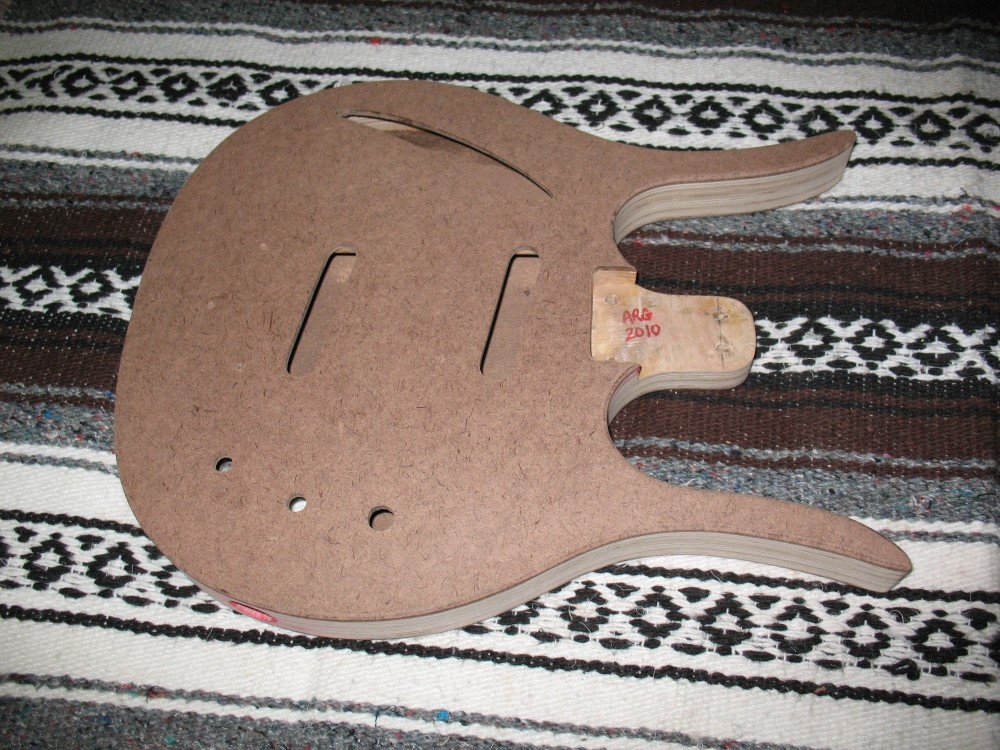
Masonite is the classic Danelectro body material. Vintage Danelectros are Masonite over a poplar core, modern ones substitute plywood for poplar, which is actually better and cheaper. Masonite is available in 1/8" and 3/16" thicknesses. For luthiery, 1/8" is preferable, but 3/16" can also be used, especially if a slightly thicker and heavier body is desired.
Masonite has a number of good points. It is very smooth, flat, and hard, and requires no pre-finishing. It is easy to work with - cutting, routing, sanding, gluing, and finishing present no problems. Unlike plywood, masonite is its own edge binding. Finally, it is extraordinarily cheap and readily available.
Masonite has one major drawback - it is not entirely waterproof. When wetted, it swells permanently. Therefore Masonite must be completely sealed under a waterproof finish, especially the edges.
Masonite lacks a typical wood grain, although it can be stained and clear-coated for an interesting effect. Typically though, masonite is given an opaque painted finish. It can also be veneered. Raw edges can be sealed by brushing on polyurethane.
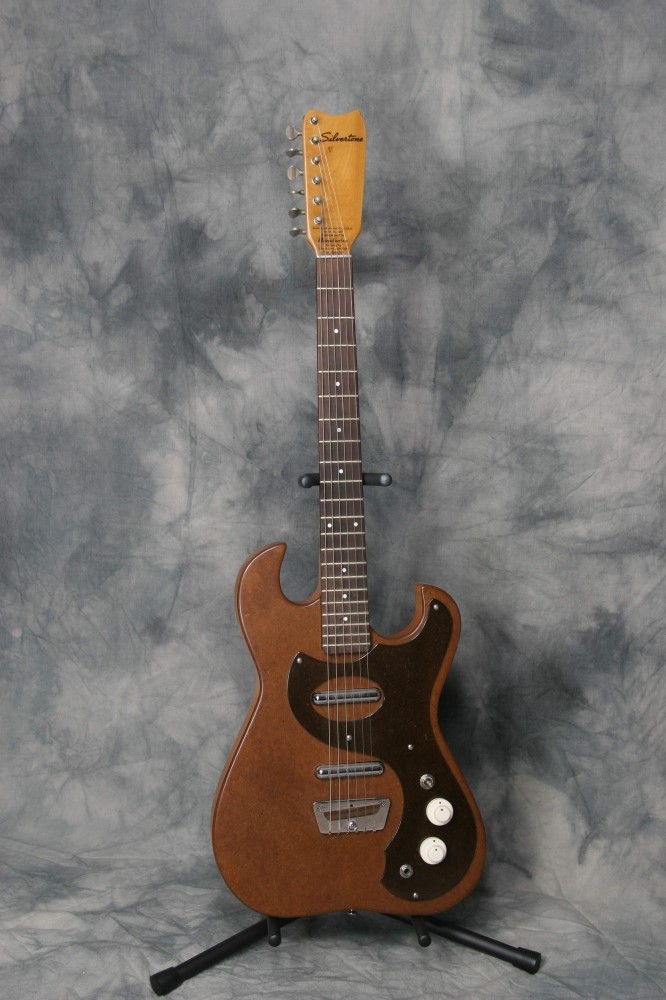
Above is a vintage Danelectro Silvertone 1457 guitar, clear-coated in polyurethane. The masonite pickguard has been stained dark for contrast. It's either beautiful, or it looks like poop - take your pick.
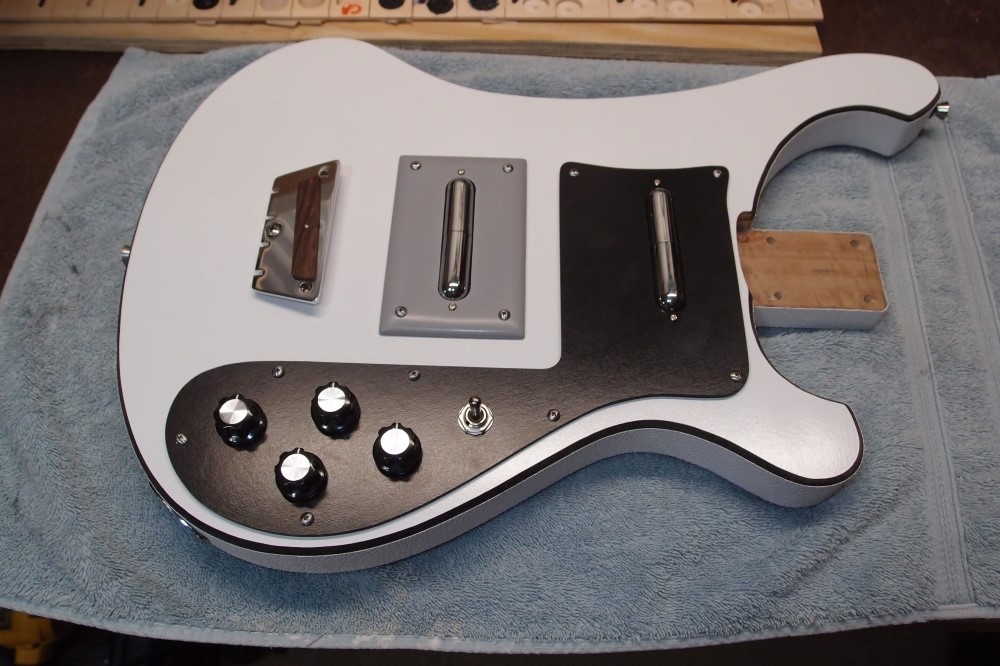
A variation of Masonite is dry-erase board. Above is a body made from 1/8" dry-erase board from Lowes. The pickguard is actually the reverse side of the dry-erase - 'chalk board'. Both the white and the black sides are ideal for making pickguards.
Making a body like this without marring the surface is difficult, this is an experiment I will not repeat. Once damaged, the dry-erase surface is impossible to repair. The side to be glued must be stripped of the slick finish first.
Dry-erase does make excellent pickguards though, in your choice of black or white. A dry-erase pickguard costs just pennies, compared to $20 for a plastic blank.
As stated earlier, seal any raw edges with polyurethane; it wipes right off the surface. The visible edges of the masonite on this body, routed at a 45-degree bevel, serve as black binding. The pickguard edges are square, although a bevel would give a nice dark border to the white side.
( The gray pickup mount is a 59 cent wall switch plate that is almost perfect for the job. )
Some Danelectro-style Masonite over plywood projects:
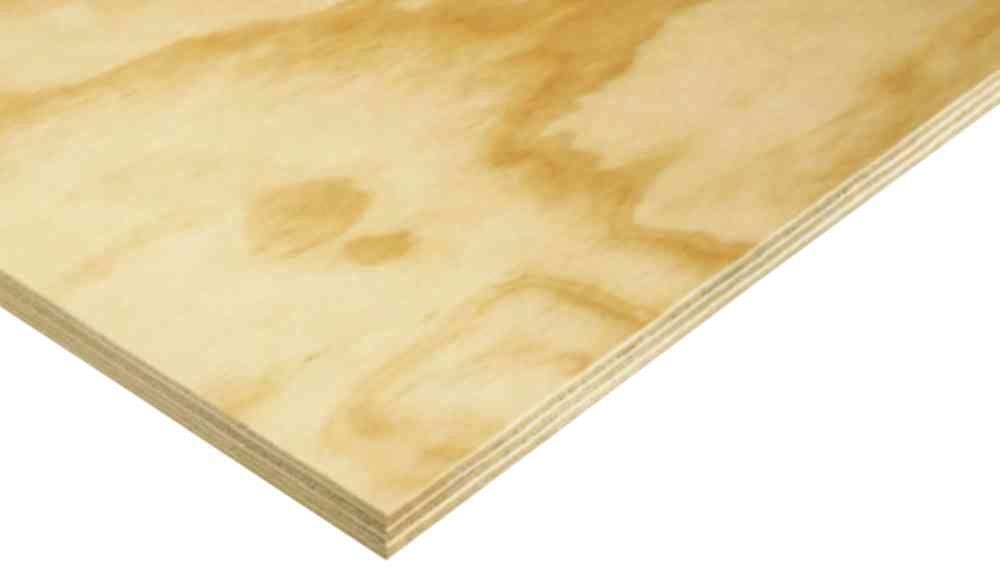




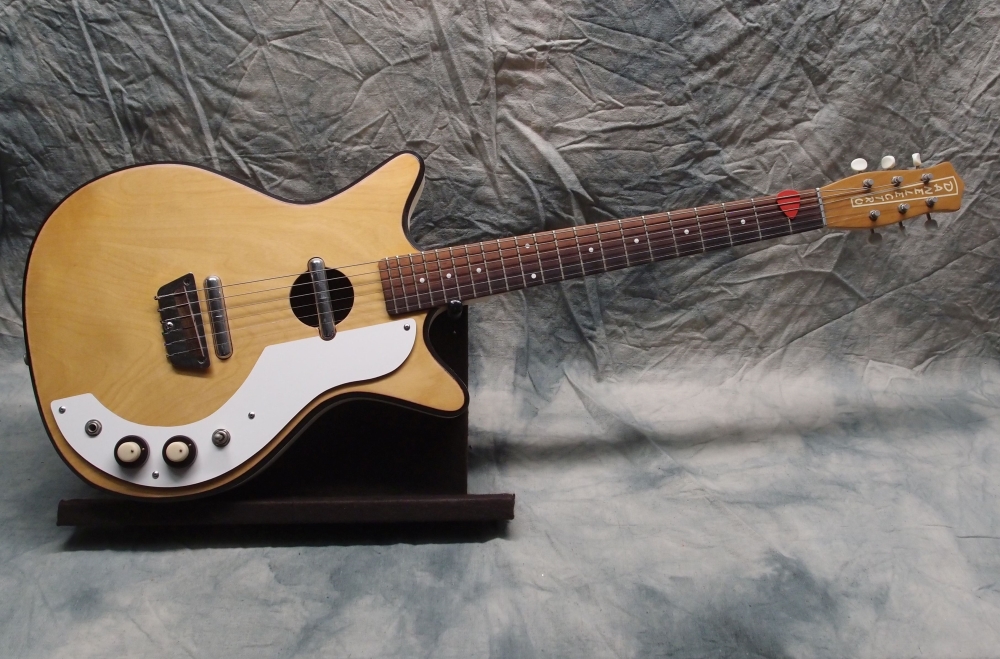
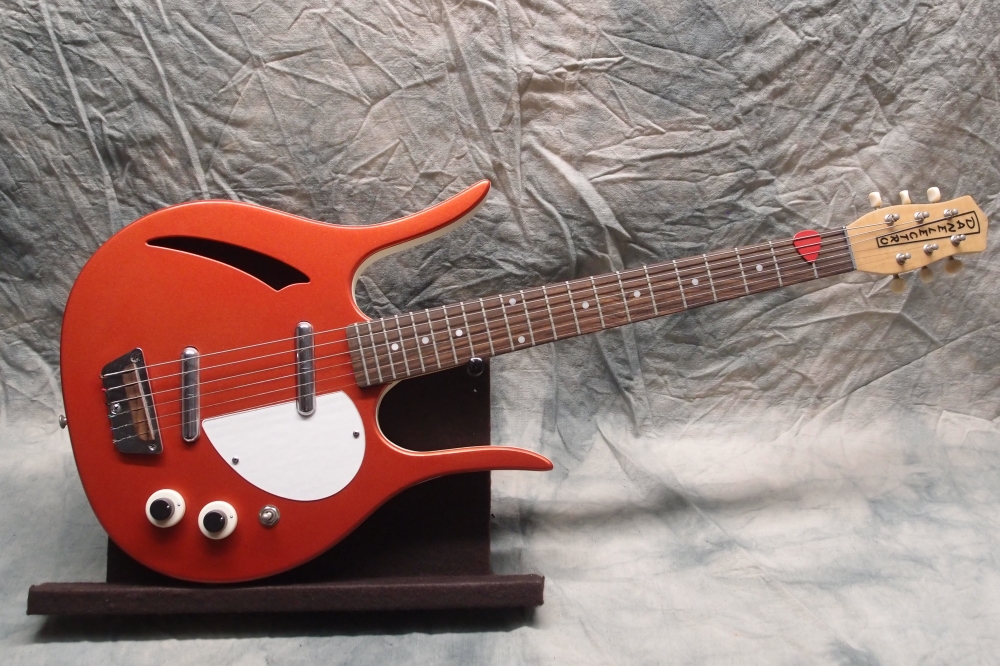
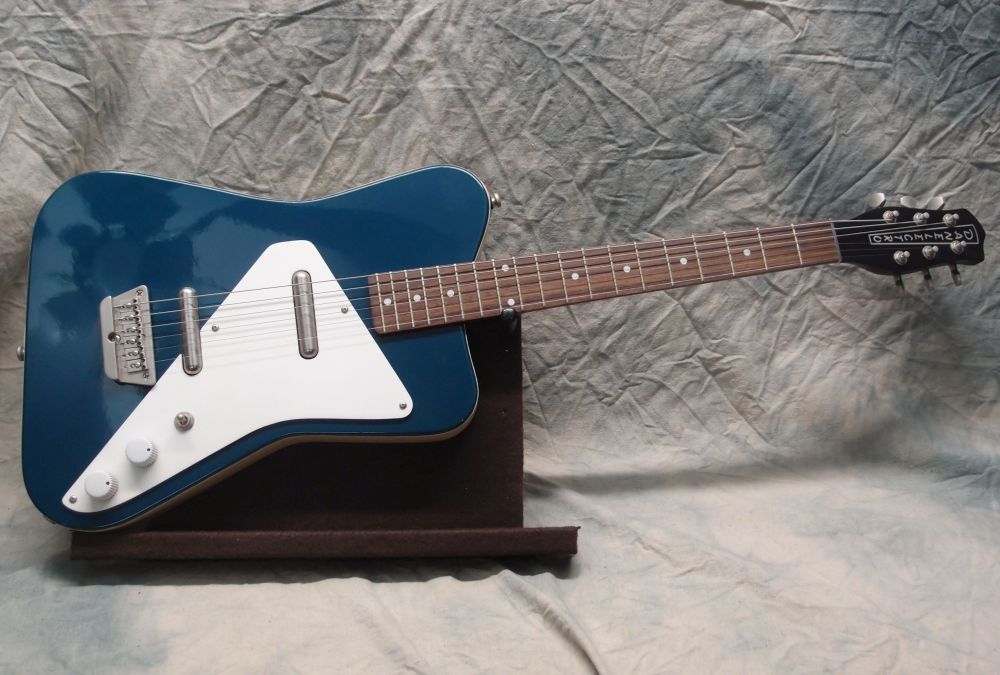

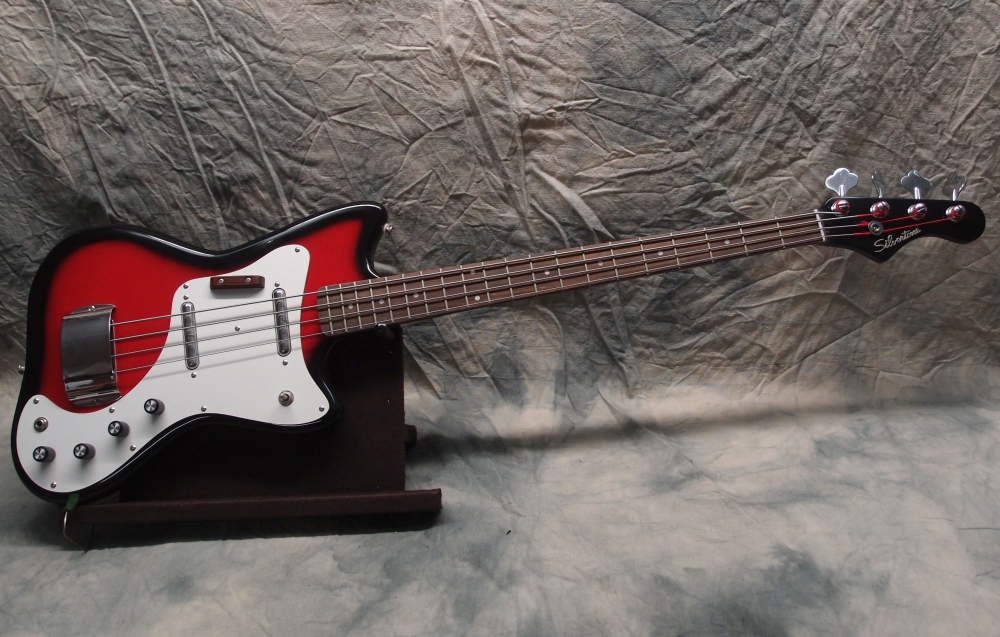
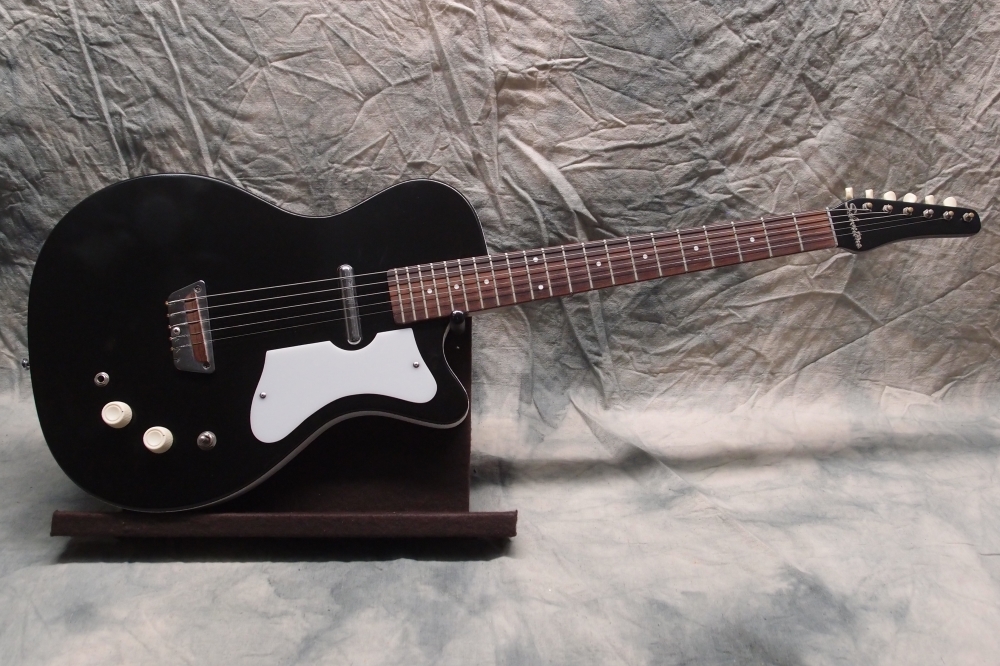
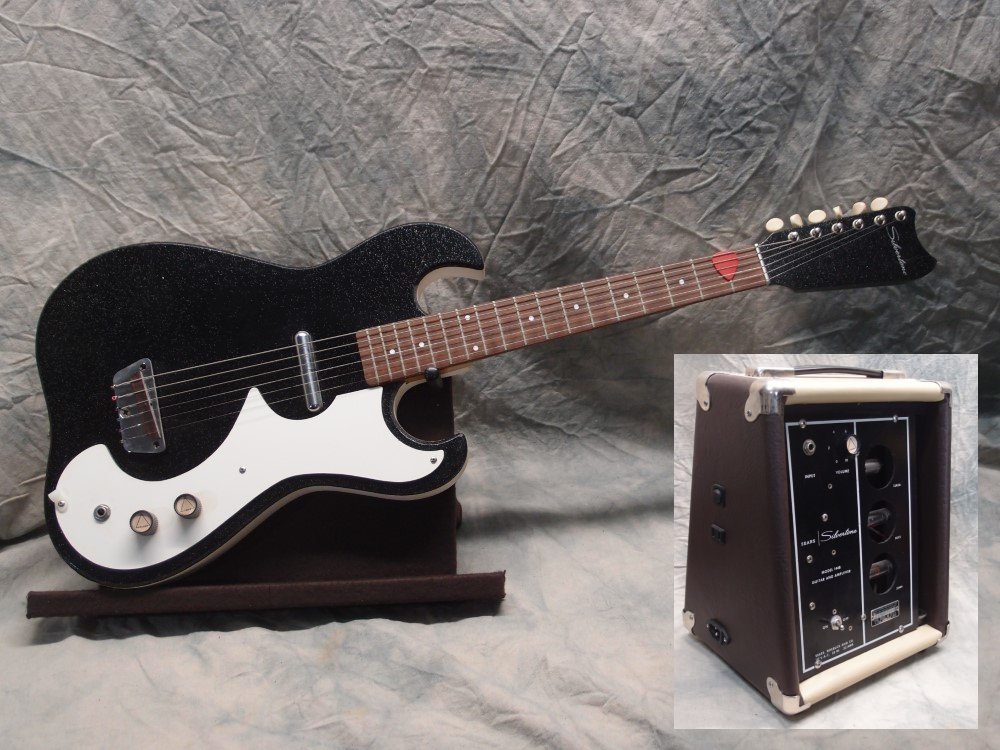
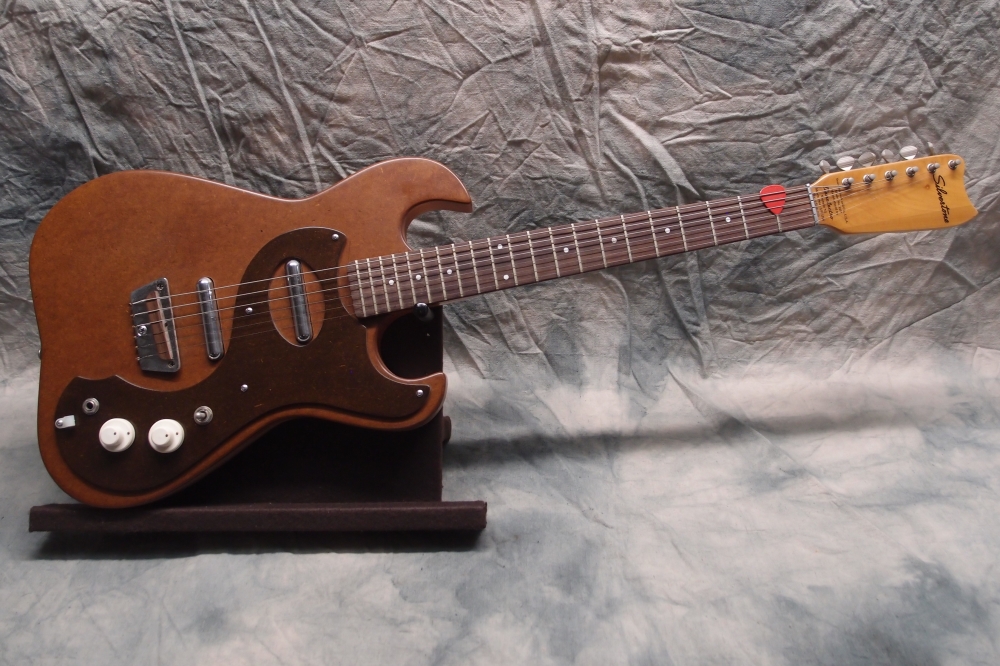
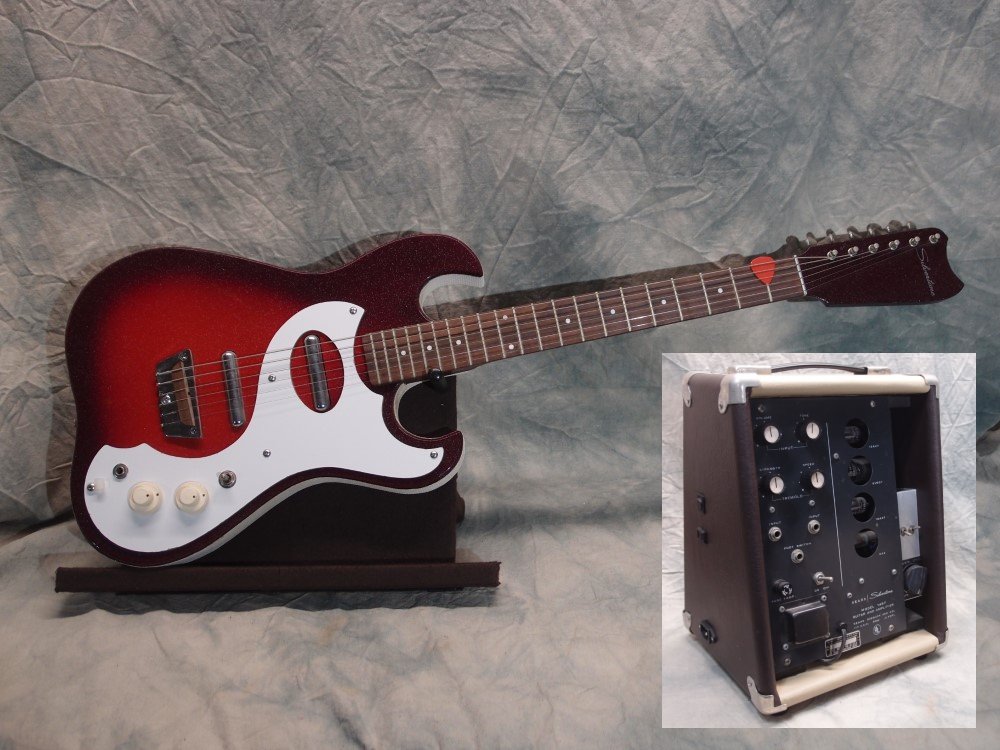

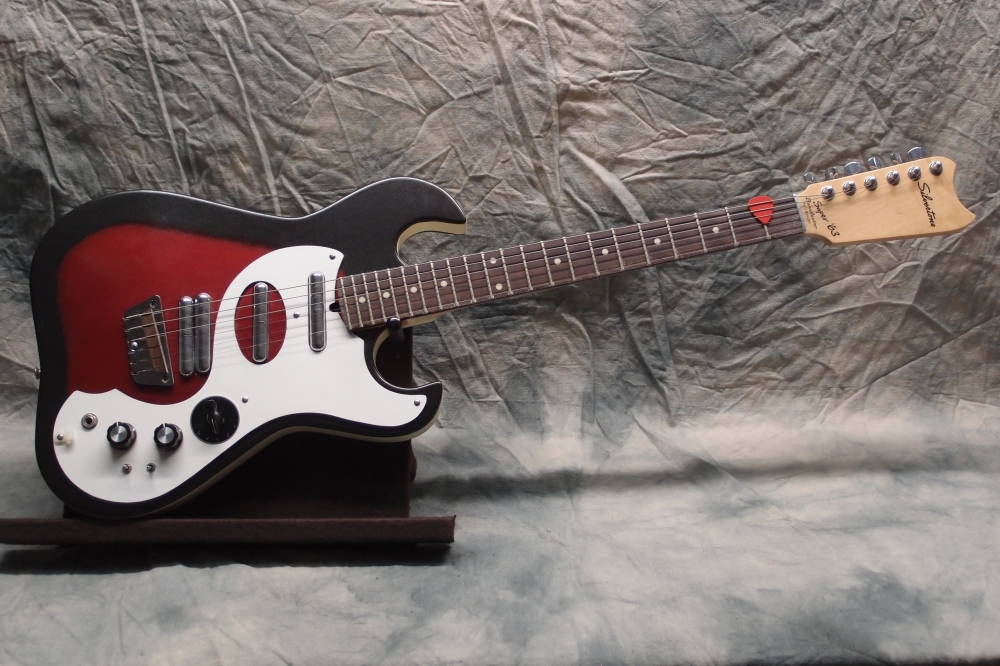
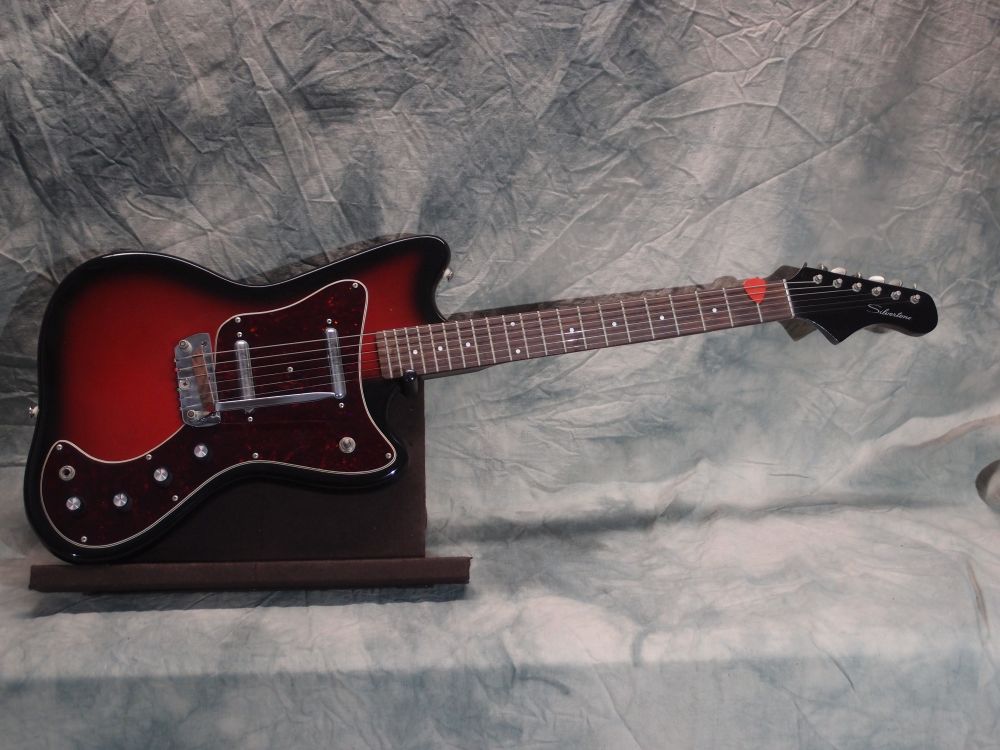
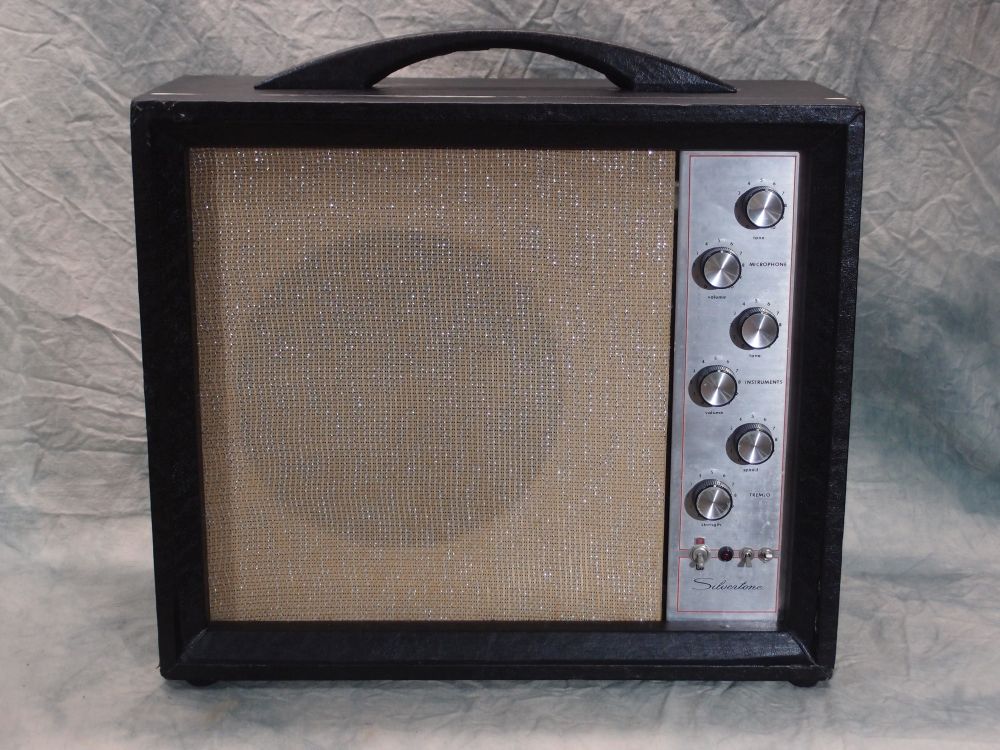

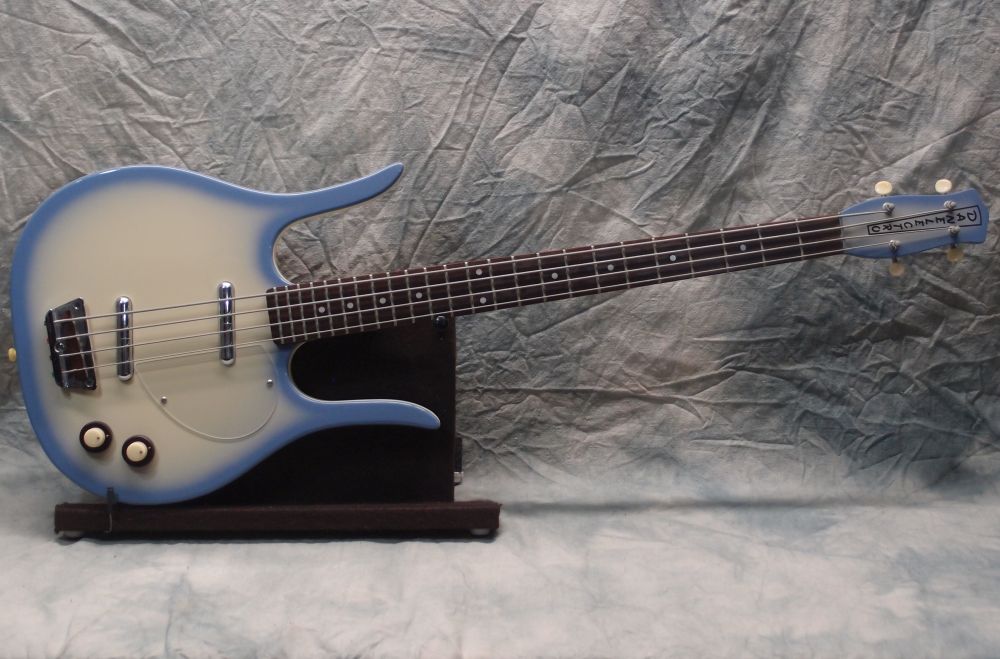
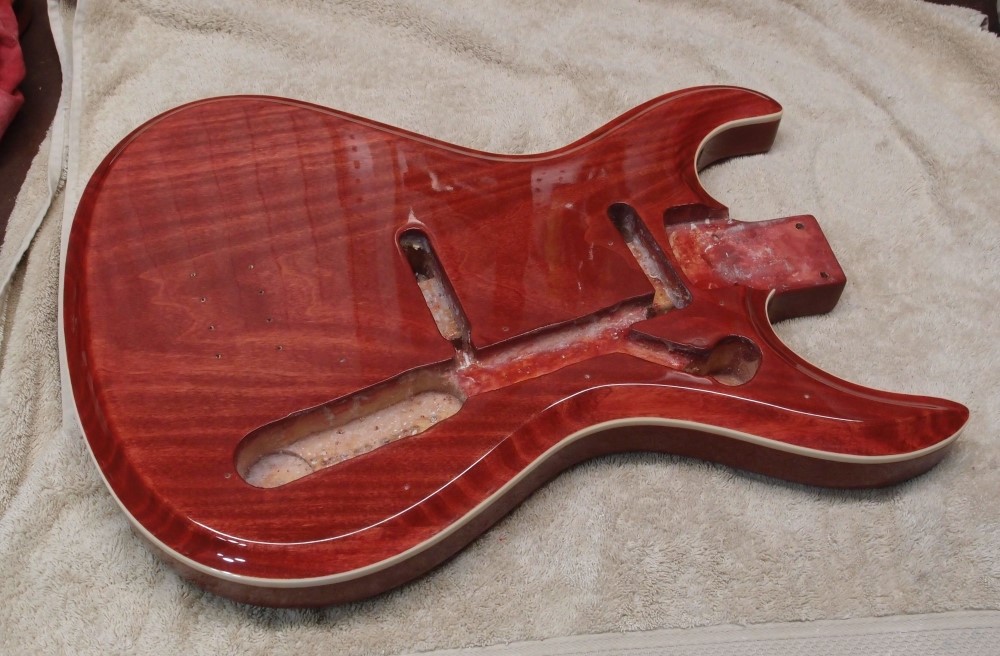
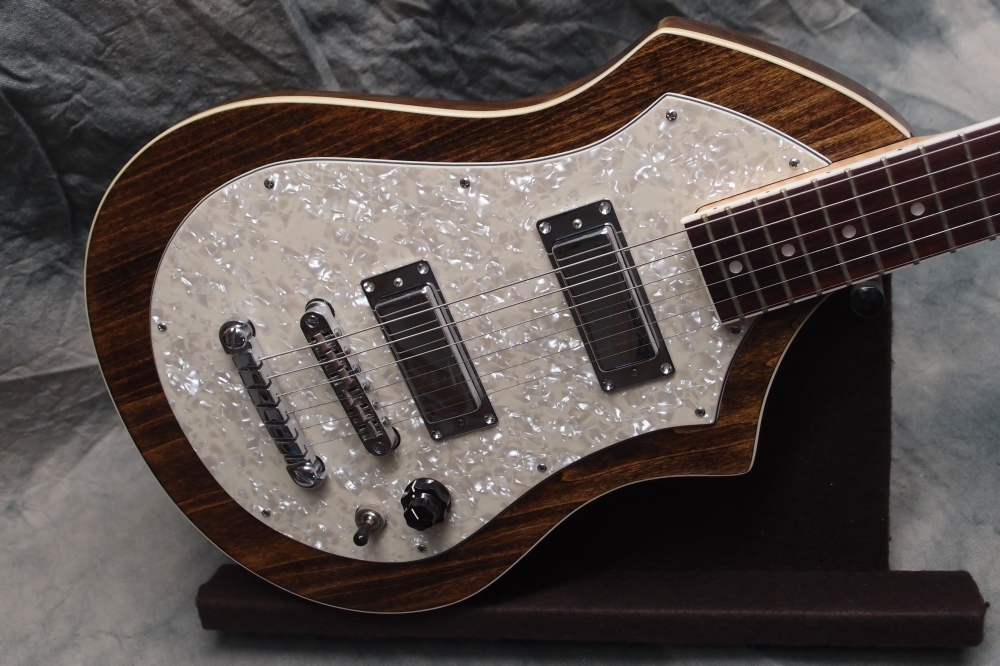
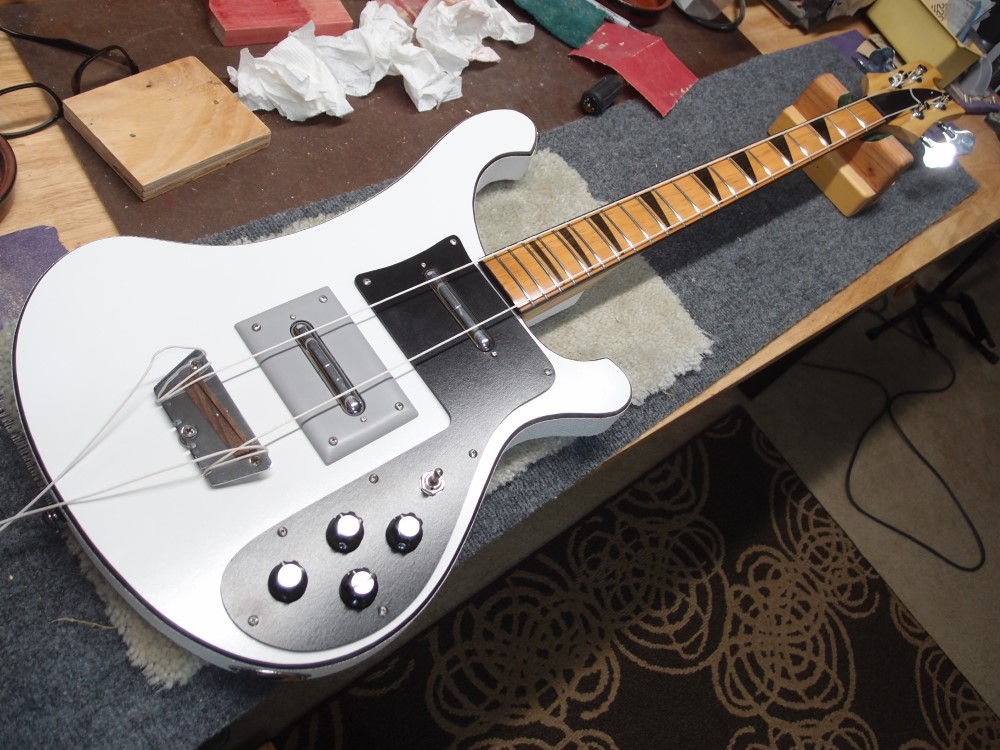
Questions or Inquiries?
Just want to say Hello? Sign the .